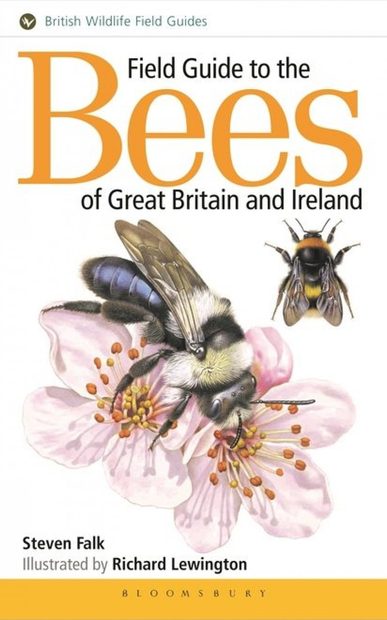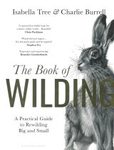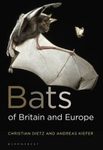Field / Identification Guide Identification Key
By: Steven Falk(Author), Richard Lewington(Illustrator)
432 pages, 700+ colour photos, 1000+ colour & b/w illustrations, 234 colour distribution maps
![Field Guide to the Bees of Great Britain and Ireland Field Guide to the Bees of Great Britain and Ireland]()
Click to have a closer look
About this book
Contents
Customer reviews
Biography
Related titles
About this book
Bees have long interested and fascinated man, and as a cornerstone in plant pollination they are an indispensable group of insects. Nevertheless, many species are declining, and efforts to help determine distributions and changes in abundance have so far been hampered by a serious lack of identification resources. This eagerly anticipated new entry in the highly acclaimed British Wildlife Field Guides series will lay bare the complexities of identification, and is caters both for people new to the bee world as well as to more experienced recorders who wish to identify every species accurately. It provides the most recent information on the identification, ecology, status and distribution of all 275 bee species in Britain, Ireland and the Channel Islands.
The book contains a comprehensive introduction to bee classification, ecology, field techniques and recording, a full glossary, and information on how to separate the sexes and distinguish bees from other insects. Families and genera are introduced, describing key characters and life histories, while the species descriptions cover field and microscopic characters, similar species, variants, flight season, habitat, flowers visited, nesting habits, status & distribution, and parasites & associates. Finally, a series of innovative illustrated keys to genera and species is included, designed to guide the user step by step through the identification process.
As many bees cannot be identified to species level in the field as they require the taking of a specimen for critical examination under a microscope, this is a field guide in the loose sense – it will help you to recognise much of what you see in the field, but also indicate at which point you need to take specimens and put them under a microscope. However, you don’t need to collect bees or have a microscope to enjoy the book.
Read more information in the interview with author Steven Falk on our blog.
Contents
PREFACE / INTRODUCTION / What is a bee? / Classification of bees / At-a-glance guide to bee genera / Species, races, forms and variations / The life cycle of bees / Enemies and associates of bees / Habitats of bees / Field techniques for finding and recording bees / Conserving bees / Societies and recording groups / Bees beyond Britain and Ireland / FURTHER READING / HOW TO USE THIS GUIDE / Dichotomous keys / Format of the species accounts / The colour plates / Male or female? / Is it a bee? / Bee anatomy / GLOSSARY / Author's web feature / KEY TO BEE GENERA / FAMILY COLLETIDAE / Colletes - Plasterer bees / Hylaeus - Yellow-face bees / FAMILY ANDRENIDAE / Andrena - Mining bees / Panurgus - Shaggy bees / FAMILY HALICTIDAE / Halictus - End-banded furrow bees / Lasioglossum - Base-banded furrow bees / Sphecodes - Blood bees / Rophites - Bristle-headed bees / Dufourea - Short-faced bees / COLOUR PLATES / FAMILY MELITTIDAE / Melitta - Blunthorn bees / Macropis - Oil-collecting bees / Dasypoda - Pantaloon bees / FAMILY MEGACHILIDAE / Anthidium - Wool carders / Stelis - Dark bees / Heriades - Resin bees / Chelostoma - Scissor bees / Osmia - Mason bees / Hoplitis - Lesser masons / Megachile - Leafcutter and mud bees / Coelioxys - Sharp-tail bees / FAMILY APIDAE / Nomada - Nomad bees / Epeolus - Variegated cuckoo bees / Eucera - Long-horned bees / Anthophora - Flower bees / Melecta - Mourning bees / Ceratina - Small carpenter bees / Xylocopa - Large carpenter bees / Bombus - Bumblebees / Apis - Honey bees / CHECKLIST OF THE BEES OF BRITAIN AND IRELAND / INDEX / PHOTOGRAPHIC CREDITS
Customer Reviews
Biography
Steven Falk is a professional naturalist and conservationist with a particular love for insects. He has worked for the former Nature Conservancy Council, two large museum services, and a wildlife trust. He has been involved with natural history books since his teens, contributing colour artwork to books such as British Hoverflies and the Collins Field Guide to Insects of Britain and Northern Europe. He has also written many scientific papers, popular articles and a county flora for Warwickshire. He currently works for Buglife.
Over almost forty years, Richard Lewington has built up a reputation as one of Europe's finest wildlife illustrators. He first became interested in butterflies as a child when he inherited a cabinet of insects. He studied graphic design at the Berkshire College of Art, and since leaving in 1971 has specialised in natural-history illustration. His meticulous paintings of insects and other wildlife are the mainstay of many of the modern classics of field-guide art.
Field / Identification Guide Identification Key
By: Steven Falk(Author), Richard Lewington(Illustrator)
432 pages, 700+ colour photos, 1000+ colour & b/w illustrations, 234 colour distribution maps
















































